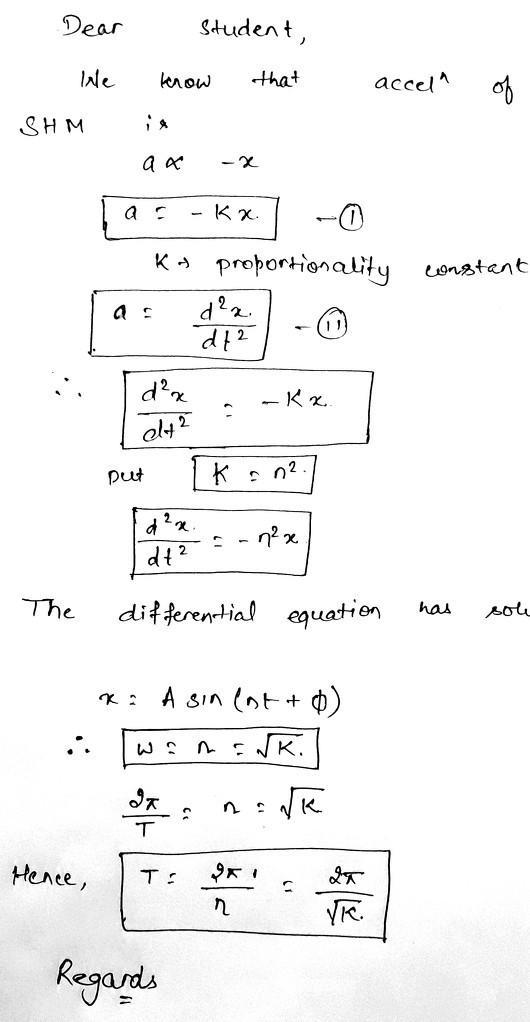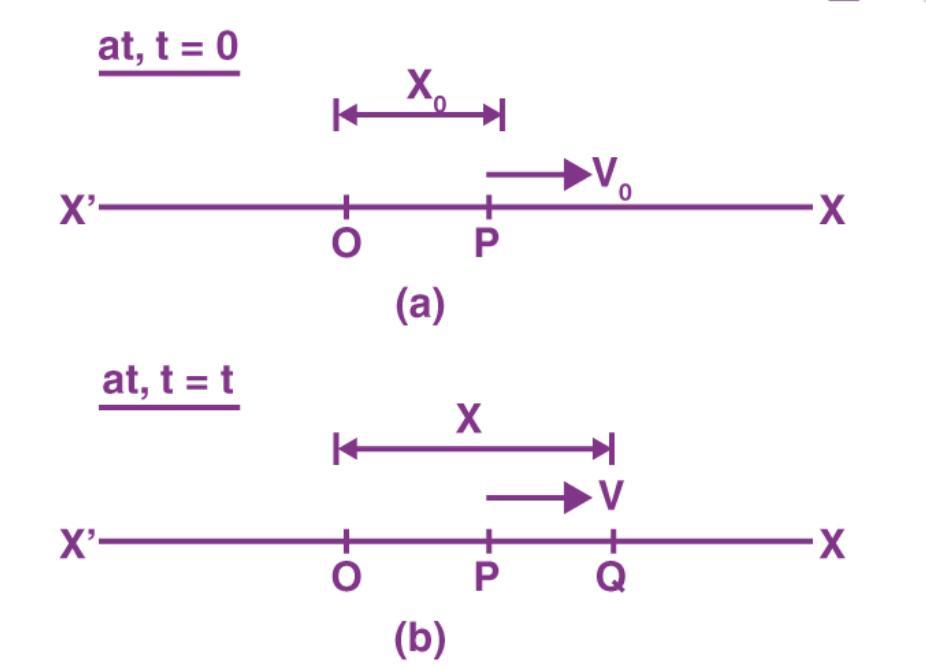Answer:
The differential equation of angular SHM is [tex]$\mathrm{I} \frac{d^{2} \theta}{d t^{2}}+c \theta=0[/tex]
Explanation:
- Angular SHM is defined as the oscillatory motion of a body in which the restoring torque responsible for angular acceleration is directly proportional to the angular displacement and its direction is opposite to that of angular displacement.
The differential equation of angular SHM is
[tex]$\mathrm{I} \frac{d^{2} \theta}{d t^{2}}+c \theta=0 \ldots(1)$$[/tex]
where[tex]$I=$[/tex] moment of inertia of the where [tex]$I=$[/tex] moment of inertia of the oscillating body,
[tex]$\frac{d^{2} \theta}{d t^{2}}=$[/tex]angular acceleration of the body when its angular displacement is [tex]$\theta$[/tex], and [tex]$c=$[/tex] torsion constant of the suspension wire,
[tex]$$\therefore \frac{d^{2} \theta}{d t^{2}}+\frac{c}{I} \theta=0$$[/tex]
Let [tex]$\frac{c}{I}=\omega^{2}$[/tex], a constant. Therefore the angular frequency, [tex]$\omega=\sqrt{\frac{c}{I}}$[/tex] and the angular acceleration,
[tex]$\mathrm{a}=\frac{d^{2} \theta}{d t^{2}}=-\omega^{2} \theta \ldots(2)$$[/tex]
The minus sign shows that the [tex]$\propto$[/tex] and [tex]$\theta$[/tex] have opposite directions. The period [tex]$T$[/tex]of angular SHM is
[tex]$\mathrm{T}=\frac{2 \pi}{\omega}=\frac{2 \pi}{\sqrt{\frac{C}{I}}}=2 \pi \sqrt{\frac{I}{C}} \ldots . .(3)$$[/tex]
This is the expression for the period terms of torque constant. Also from Eq.(2),
[tex]$$\omega=\sqrt{\left|\frac{x}{\theta}\right|}$$[/tex]
[tex]$=\sqrt{\text { angular acceleration per unit angular displacement }}$[/tex]
[tex]\begin{aligned}&\therefore \top=\frac{2 \pi}{\omega}=\frac{2 \pi}{\sqrt{\left|\frac{\alpha}{\theta}\right|}} \\&=\frac{2 \pi}{\sqrt{\text { angularacceleration per unit angulardisplacement }}}\end{aligned}[/tex]
Conditions for an Angular Oscillation to be Angular SHM
The body must experience a net Torque that is restoring in nature. If the angle of oscillation is small, this restoring torque will be directly proportional to the angular displacement.
[tex]$T \propto-\theta$[/tex]
[tex]$$\mathrm{T}=-\mathrm{k} \theta$$[/tex]
[tex]$$T=1 \alpha$$[/tex]
[tex]$$\begin{aligned}&\alpha=-\mathrm{k} \theta \\&I \frac{d^{2} \theta}{d t^{2}}=-K \theta\end{aligned}$$[/tex]
[tex]$\frac{d^{2} \theta}{d t^{2}}=-\left(\frac{K}{I}\right) \theta=-\omega_{0}^{2} \theta$$[/tex]
[tex]$\frac{d^{2} \theta}{d t^{2}}=-\omega_{0}^{2} \theta=0$$[/tex]
This is the differential equation of an angular Simple Harmonic Motion. Solution of this equation is angular position of the particle with respect to time.
[tex]$$\theta=\theta_{0} \sin \left(\omega_{0} t+\phi\right)$$[/tex]
Then angular velocity,
[tex]$$\omega=\theta_{0} \cdot \omega_{0} \cos \left(\omega_{0} t+\phi\right)$$[/tex]
[tex]$\theta_{0}$[/tex]- amplitude of the angular SHM
Learn about angular simple harmonic motion
- https://brainly.in/question/7642032?referrer=searchResults
- https://brainly.in/question/7642005?referrer=searchResults




